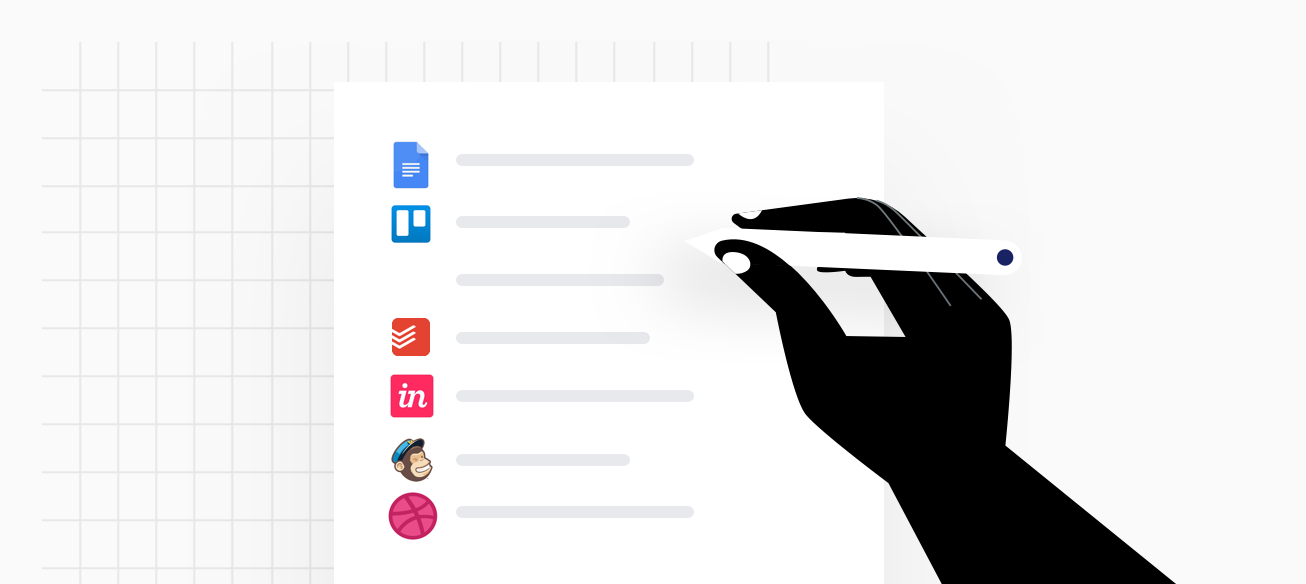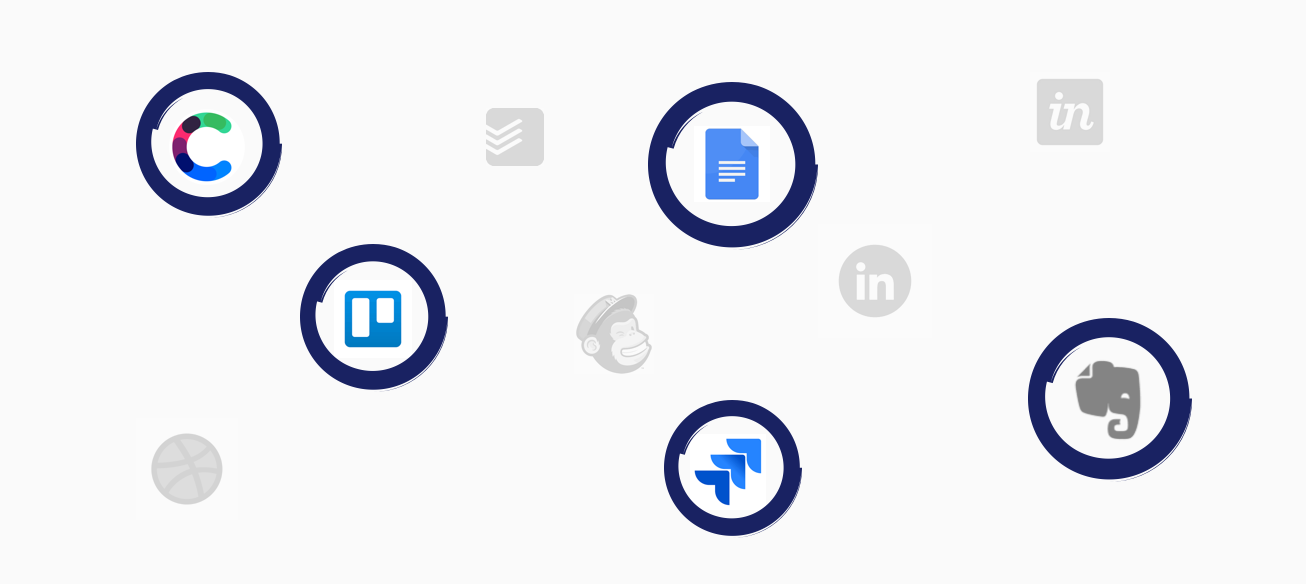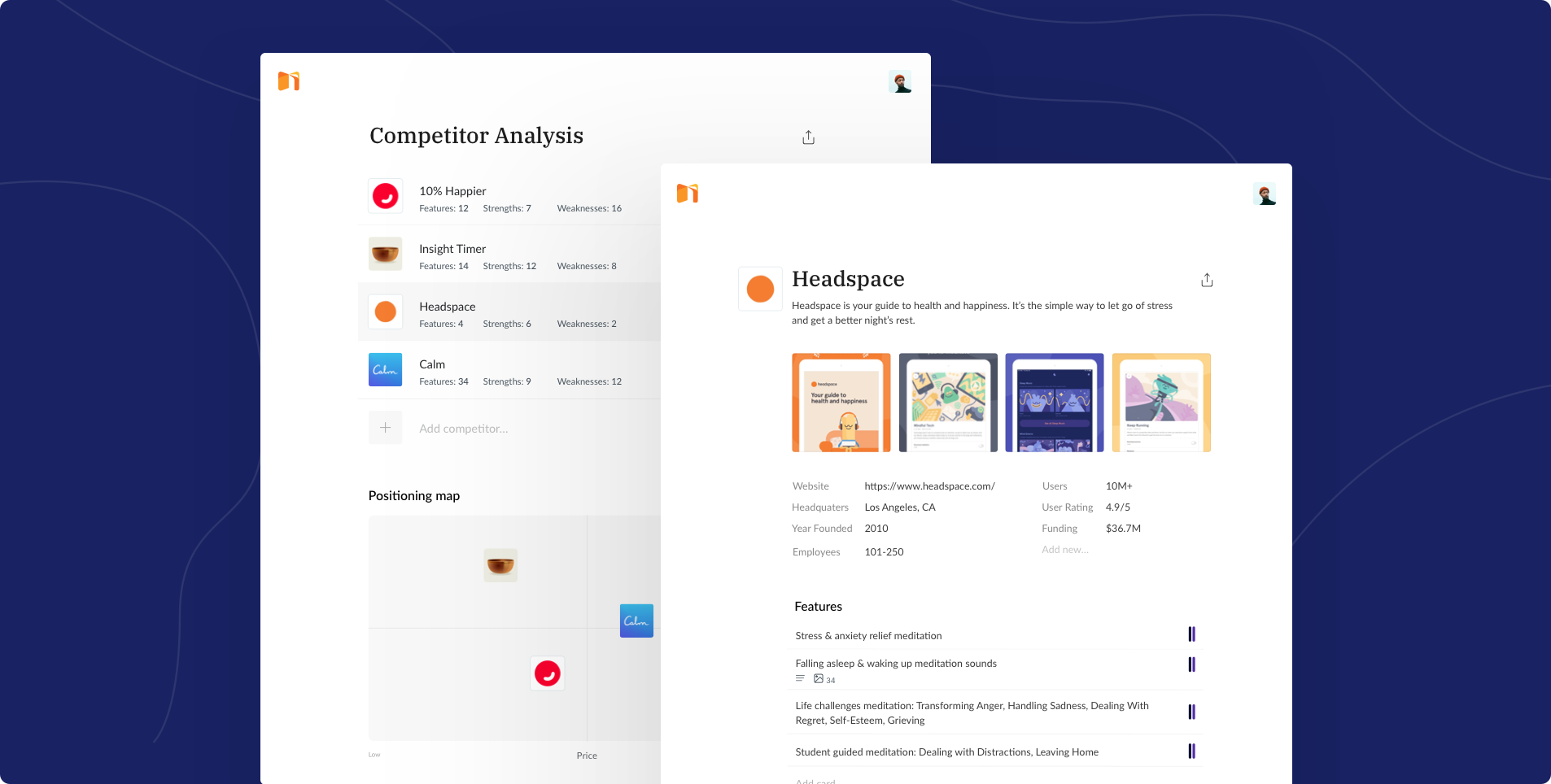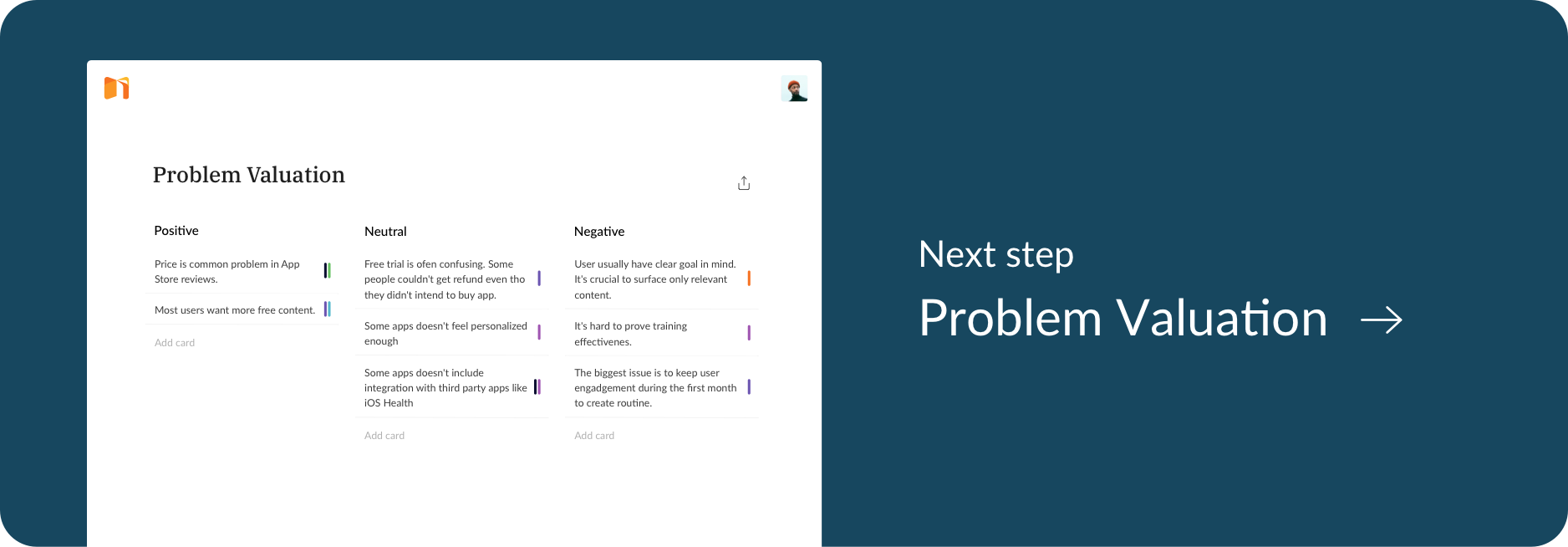When designing a new product, always keep in mind that there might be other similar products out there. This is a good thing actually, since it proves that the problem you’re about to solve is real and needs attention.
Lack of competition is a red flag as it suggests that the problem may not be that common and therefore doesn’t require a dedicated solution.
The “Competitive Analysis” is the last step of data gathering on Talebook.io. Together with the information collated on the previous stages of the discovery phase, you now have access to an assortment of valuable data to begin the project.
Step by step guide
Make a list of competitive products
Research those products that solve the same problems as the one your’re working on. With that in mind, there are two types of competitors to consider in competitive analysis:
- Direct competitor — This means the product offers exactly the same solution as yours. For example, the direct competitors for your calendar app would be Google Calendar, Outlook, or Fantastical.
- Indirect competitor — This refers to products with some specific features that provide similar solutions to your product. Using the calendar app example above, your indirect competitors could be event reminders, time trackers, to-do lists, or any other similar calendar features that are offered indirectly by other companies like Trello, Asana or Teamwork Projects.

It is essential to include indirect competitors in your research process because it helps you to look at problems from a different perspective, which could result in more excellent, innovative ideas.
Here’s a good article with an in-depth look at direct and indirect competitors.
Select 5 to 10 competitors
Analyzing 5 to 10 competitors helps ensure that you will be able to collect just the right amount of data to gain valuable insight.
It is impractical to analyze all possible competitors so it’s better to focus on the quality of the research rather than quantity.
A proper review of the ten most essential competitors is way more valuable than analyzing 20 competitors only briefly. In line with the 80/20 rule, make sure that 80% is direct competition and the remaining 20% is indirect.
You can use tools like Google search, Google Trends, SimilarWeb, Compete, or Alexa to search for competitors. If you did the stakeholder interviews, then you should already have an initial list of competitors to start researching.
Create a list of criteria
In Talebook, we take into account the three essential elements of competitive products: Features, Strengths, and Weaknesses.

Features
In this section, you need to write down all the most critical elements of the product. For example, for a calendar app, you can list features such as Schedule events, Create an event, Invite guests, etc.Consult the product’s official website where you can find all the main functionalities listed to help you with creating this list of features. Of course, it would be best if you will spend some time using a competitive tool, put yourself in a user’s shoes, and experience the product.
Strengths & Weaknesses
Think of what makes a particular product better than others. Be sure to include your personal opinions here along with views from other users. An excellent source of useful quality information about a product is AppStore and Google Play. appannie.com is another great place to gather some user feedback about your competitors.Analyzing reviews helps you quickly sum up other users’ thoughts on a product, both positive and negative. Try to write down ten most essential thoughts for each positive and negative side. It will make your analysis more accessible and keep you focused on the most fundamental aspects of your research.
Tips
Get help to identify competitors
If you don’t have a good idea of the competitor landscape, reach out to the stakeholder for help. They can help you quickly identify their most prominent rivals. Or you can use SimilarWeb, a tool that automatically generates a list of similar websites.
Don’t select too many competitors to analyze.
IFocus on quality rather than quantity. 5-10 is an excellent place to start.
Include direct and indirect competitors
Make sure to include both direct and indirect competitors in your analysis. Use 80/20 rule: 80% of direct competitors and 20% indirect.
Stay up to date with competitors
Once in a while, look at the competitor’s products. Signing up for their newsletters is a great way to be up to date with what’s new in their business.
Conclusion
Competitive analysis is a great way to understand the problems of your target users. It can provide you insights on features that are worth including in your own product, as well as those that you should avoid.Talebook can help you to get through this process step by step, so that you and your team can stay organized with easy to use templates and beautifully designed documentation processes.





